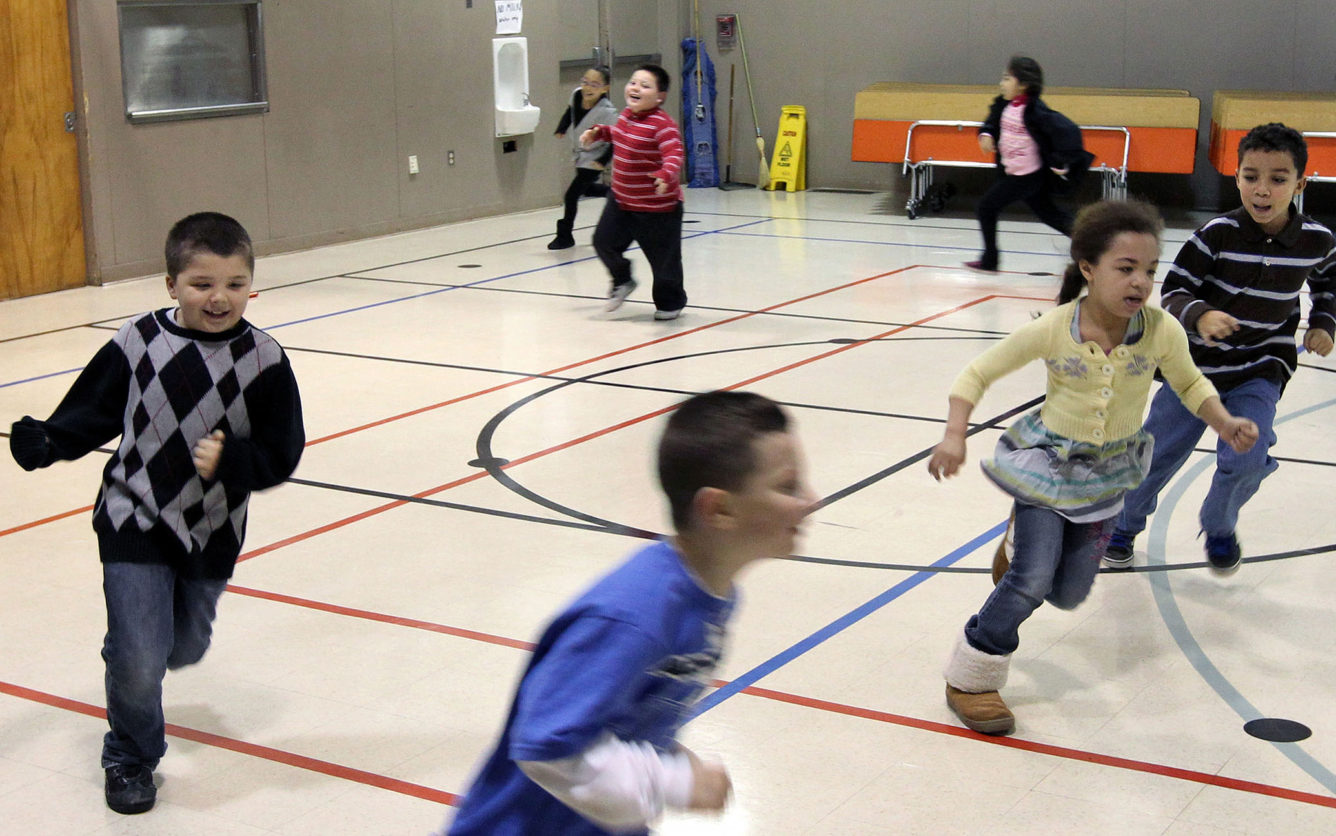Pediatricians told to prescribe physical activity for kids with disabilities
Pediatricians should encourage children with disabilities to participate in sports, recreation and other physical activities, according to new guidance.

New guidance from the American Academy of Pediatrics says that pediatricians “should not hesitate to promote physical activity” for children with disabilities. Implementing more structured aerobic activities like cybercycling as opposed to traditional physical education classes at school may benefit kids with complex behavior disorders, a new study suggests. Janet Jensen, Tacoma News Tribune/TNS
by Shaun Heasley, Disability Scoop December 14, 2021
The American Academy of Pediatrics is telling its members to push kids with disabilities to take part in activities that align with their likes and abilities.
In a clinical report published in the journal Pediatrics this month, the professional association of pediatricians said that physicians should move away from conservative approaches that focused on a child’s disability. Instead, doctors ought to work with families to find ways for children to be included.
“We know that movement and activity offer so many benefits, but sometimes — perhaps out of an overabundance of caution — we overlook options available for our children with medical conditions or disabilities,” said Dr. Paul S. Carbone, lead author of the clinical report. “As pediatricians, we can create ‘physical activity prescriptions’ for children with disabilities and offer practical suggestions on identifying what would be the best fit for the individual child within their community. Taking part in a recreational sport or activity gives children a sense of achievement and chance to improve not only physical health, but skill levels, creativity, friendships and quality of life.”
The guidance acknowledges that several barriers including functional limitations, negative self-perceptions and accessibility can play a role.
The pediatrics group advises physicians to assess children’s capabilities, talk with families about goals and develop a prescription for physical activity. Parents should be encouraged to include kids with disabilities in recreational activities and pediatricians can work with schools and other community organizations to promote inclusion, the clinical report says.
“Pediatricians can help families and children balance the benefits of participation with the potential risks,” said Dr. Claire LeBlanc, an author of the report. “It’s no longer acceptable to play it safe or assume children with disabilities ‘can’t do that.’ We want all children to experience the challenges and joys of participating in some form of recreation.”
Source Disability Scoop
| References |
Promoting the Participation of Children and Adolescents With Disabilities in Sports, Recreation, and Physical Activity, Carbone PS, Smith PJ, Lewis C, LeBlanc C. Pediatrics. 2021 Dec 1;148(6):e2021054664. doi: 10.1542/peds.2021-054664. Full text, PDF
| Further reading |
Promoting the participation of children with disabilities in sports, recreation, and physical activities, Murphy NA, Carbone PS; American Academy of Pediatrics Council on Children With Disabilities. Pediatrics. 2008 May;121(5):1057-61. doi: 10.1542/peds.2008-0566. Full text, PDF
Barriers and facilitators of sports in children with physical disabilities: a mixed-method study, Jaarsma EA, Dijkstra PU, de Blécourt AC, Geertzen JH, Dekker R. Disabil Rehabil. 2015;37(18):1617-23; quiz 1624-5. doi: 10.3109/09638288.2014.972587. Epub 2014 Oct 27.
The extent, context and experience of participation in out-of-school activities among children with disability, Shields N, Synnot A, Kearns C. Res Dev Disabil. 2015 Dec;47:165-74. doi: 10.1016/j.ridd.2015.09.007. Epub 2015 Sep 29.
Comparing participation in physical recreation activities between children with disability and children with typical development: A secondary analysis of matched data, Woodmansee C, Hahne A, Imms C, Shields N. Res Dev Disabil. 2016 Feb-Mar;49-50:268-76. doi: 10.1016/j.ridd.2015.12.004. Epub 2015 Dec 29.
Barriers and facilitators to physical activity participation for children with physical disability: comparing and contrasting the views of children, young people, and their clinicians, Wright A, Roberts R, Bowman G, Crettenden A. Disabil Rehabil. 2019 Jun;41(13):1499-1507. doi: 10.1080/09638288.2018.1432702. Epub 2018 Jan 30.
Increasing Wellness Through Physical Activity in Children With Chronic Disease and Disability, Coleman N, Nemeth BA, LeBlanc CMA. Curr Sports Med Rep. 2018 Dec;17(12):425-432. doi: 10.1249/JSR.0000000000000548.
Also see
Teens with disabilities are 5 times more likely to suffer from mental, emotional and behavioral health disorders, UIC researchers say Chicago Tribune
New study demonstrates link between brain chemical and visual processing in autism EurkeAlert! AAAS
Study Identifies Biomarkers Linked to Autism Risk Columbia Public Health
